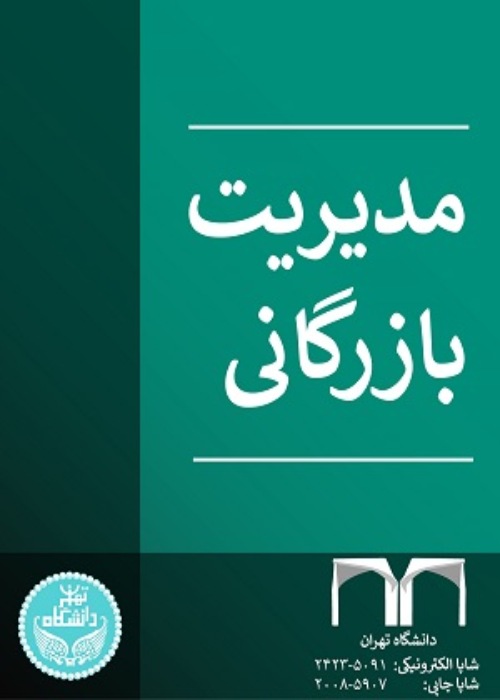Testing the customer experience management model in E-banking
In the field of e-banking services, banks and service providers have identified and focused on customer experience management as a strategic transition, and applying this approach has led to the promotion of profitable customer behaviors and the achievement of competitive advantage. Therefore, the purpose of this study is to test the customer experience management model in electronic banking services in the Iranian banking and electronic payment services industry.
This applied development research was conducted based on collecting data via field-survey research. The study population included managers and experts in the field of electronic banking services. Due to insufficient access to individuals, the available method was used for the sampling method and 170 questionnaires were collected. Data analysis was performed using the structural equation method and PLS software was used.
In this study, the research model was tested by exploring the dimensions of customer experience management in the field of electronic banking services and refining it by analyzing quantitative data in the target community. This model included 8 dimensions of customer experience, e-banking service provider tools, marketing factors, technological infrastructure factors, structure factors, customer factors, electronic banking services industry factors, and macro environment in electronic banking services. Also, these dimensions included 22 main categories and 58 sub-categories as the characteristics of the model components. In evaluating the structural part of the model, there was a strong relationship between endogenous and exogenous structures, and the overall research model has a good fit. The determination coefficient (R2) of endogenous structures of the model with its exogenous structures with a value of more than 0.729, indicated the strength of the structural part of the model. According to the path coefficients determined in the reflective model, the factors of technological infrastructure (0.723), customer factors (0.502), structural factors (0.397), marketing factors (0.123), and provider tools Electronic banking services (0.119) had the most effect on the independent variables, and had the greatest impact on creating the customer experience, too.
The research results were presented in the form of a customer experience management model for electronic banking services. The results of data analysis while confirming the hypotheses showed that the dimensions and components of the model are confirmed. In the research model, improving customer experience was the centralized goal of customer experience management, which depended on internal and external dimensions, and in this regard, customer experience management strategies in e-banking services were presented. Finally, suggestions for future implementation and research were provided.
- حق عضویت دریافتی صرف حمایت از نشریات عضو و نگهداری، تکمیل و توسعه مگیران میشود.
- پرداخت حق اشتراک و دانلود مقالات اجازه بازنشر آن در سایر رسانههای چاپی و دیجیتال را به کاربر نمیدهد.


